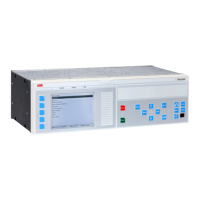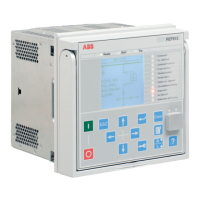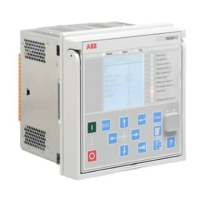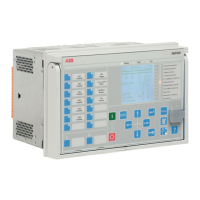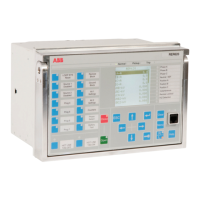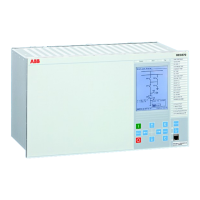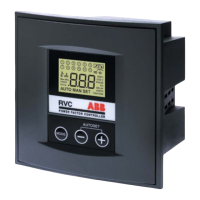1MAC309294-MB F Section 4
Protection functions
RER620 241
Technical Manual
4.5.1.5 Application
The n-1 criterion is often used in the design of a fault clearance system. This means that
the fault is cleared even if some component in the fault clearance system is faulty. A circuit
breaker is a necessary component in the fault clearance system. For practical and
economical reasons, it is not feasible to duplicate the circuit breaker for the protected
component, but breaker failure protection is used instead.
The breaker failure function issues a back-up trip command to adjacent circuit breakers in
case the original circuit breaker fails to trip for the protected component. The detection of
a failure to break the current through the breaker is made by measuring the current or by
detecting the remaining trip signal (unconditional).
50BFT can also retrip. This means that a second trip signal is sent to the protected circuit
breaker. The retrip function is used to increase the operational reliability of the breaker.
The function can also be used to avoid back-up tripping of several breakers in case
mistakes occur during relay maintenance and tests.
50BFT is initiated by operating different protection functions or digital logics inside the
relay. It is also possible to initiate the function externally through a binary input.
50BFT can be blocked by using an internally assigned signal or an external signal from a
binary input. This signal blocks the function of the breaker failure protection even when
the timers have started or the timers are reset.
The retrip timer is initiated after the pickup input is set to true. When the pre-defined time
setting is exceeded, 50BFT issues the retrip and sends a trip command, for example, to the
circuit breaker's second trip coil. Both a retrip with current check and an unconditional
retrip are available. When a retrip with current check is chosen, the retrip is performed only
if there is a current flow through the circuit breaker.
The backup trip timer is also initiated at the same time as the retrip timer. If 50BFT detects
a failure in tripping the fault within the set backup delay time, which is longer than the
retrip time, it sends a backup trip signal to the chosen backup breakers. The circuit breakers
are normally upstream breakers which feed fault current to a faulty feeder.
The backup trip always includes a current check criterion. This means that the criterion for
a breaker failure is that there is a current flow through the circuit breaker after the set
backup delay time.
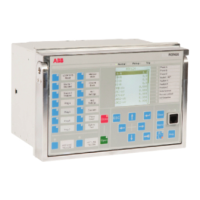
